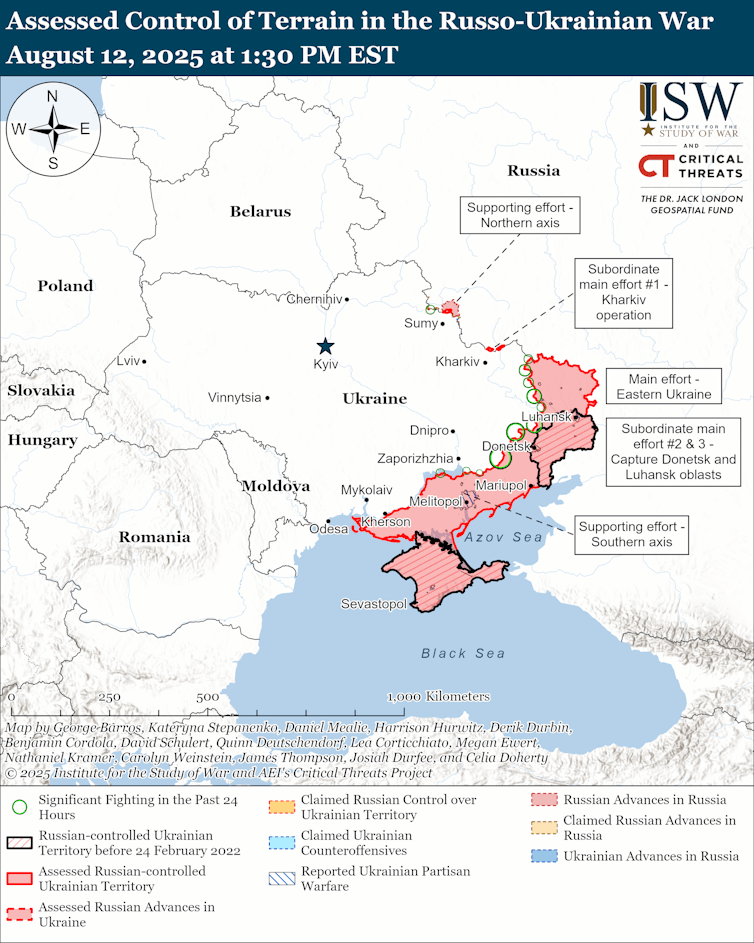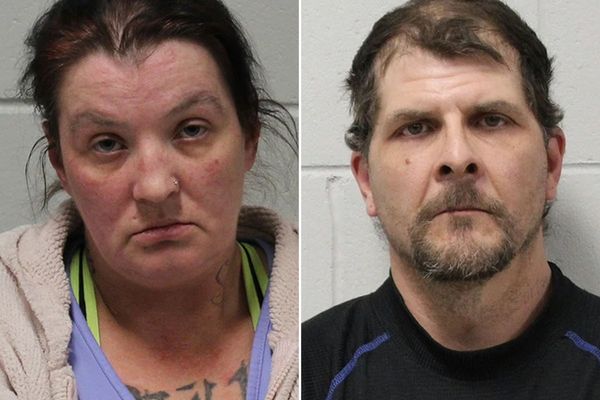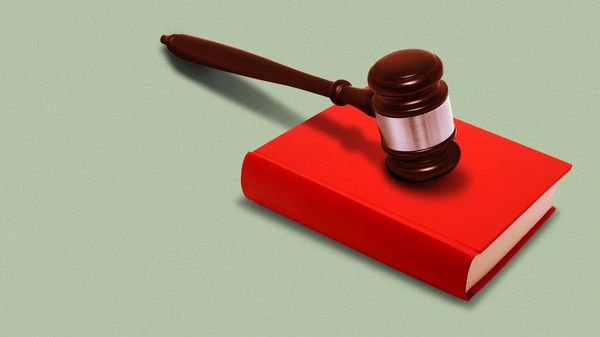Donald Trump will sit down with Vladimir Putin at a snap summit in Alaska on August 15 to discuss the war in Ukraine.
The American president has claimed it’s a victory his Russian counterpart is coming to the US at all. But hanging over the meeting is the fact Alaska was Russian until America acquired it in 1867, with the implicit message that territory does change hands from time to time.
The Alaska meeting is the latest in a series of US-backed attempts to end the war. Trump announced the summit on August 8 after Putin failed to meet a deadline that day to put a ceasefire in place or face US sanctions.
With Putin apparently set to ignore Trump’s threat, the hastily arranged summit was organised to allow the US president to look as if he is still able to wield diplomatic clout over Ukraine. But the danger is that, far from settling the conflict, this meeting could aggravate an already contentious situation.
Putin knows what he wants from the summit: to be awarded territory in Ukraine that his military has occupied, assurances that Ukraine will never join Nato, a demilitarised Ukraine with a Moscow-friendly government, and to end a war he never thought would be so difficult to win.
It’s less clear what Trump wants. The US president hasn’t clarified exactly what his plans are or even what his role is, saying that it isn’t up to him to “make a deal” between Russia and Ukraine.
Trump has described the summit as a “listening exercise”, words that have been seen by some analysts as a way of managing expectations. But Trump has also said there will be “severe consequences” if Putin doesn’t take action to stop the war.
This confusion opens up big questions as to what this summit is actually supposed to do in terms of reaching a meaningful solution.
Clearly, however, a lot hinges on territory. Ahead of Friday’s meeting, Trump has talked of “land-swapping”.
But what does this mean? The US president told a news conference on August 11 that he wants to return territory to Ukraine and “get back Ukraine’s oceanfront property”.
His public statements, which had always been either ambivalent or supportive of Putin, have been tougher on the Russian president of late – recently calling Putin a “disappointment” and describing Russian attacks on Ukraine as “disgusting”. Trump also upped the ante when he ordered two US nuclear-armed submarines to deploy closer to Russia earlier this month.
Given all this, it might seem on the surface as if Trump has moved closer to supporting Ukraine. But the reference to swapping land has caused alarm.
Ukraine has never laid claim to any Russian territory – it just wants its own back. It’s not clear Kyiv has anything to “swap” but land that was part of Ukraine before Russia invaded.
Russian land grab
The fact is that Putin isn’t talking about a land-swap – he’s talking about land acquisition. After some confusion when US envoy Steve Witkoff appeared to be mistaken about what Putin is asking for, it became clear that Putin is playing hardball.
The Russian president is calling for Ukraine’s withdrawal from its defensive positions in Donetsk and Luhansk in exchange for a ceasefire. These are regions which were partly occupied by Russia in 2014, more of which was taken after the 2022 invasion.
Ukrainian president Volodymyr Zelenksy has ruled this option out, saying it would be both unacceptable and illegal under Ukraine’s constitution.

It isn’t clear that Trump will respect Ukraine’s position. Despite his more recent criticisms of Putin, Trump has a track record of public support for the Russian president.
And Trump has now given Putin a sense of credibility by simply agreeing to see him. A meeting with the US president carries a lot of weight. It’s a fact not lost on Zelensky, who called the summit “a personal victory” for Putin.
Who isn’t in the room?
Another problem is that Zelensky is not on the summit’s guest list. While Trump spoke to Zelenksky and EU leaders on Wednesday – and has floated the idea of future discussions between Ukraine and Russia – this is not the same as being in the room where it happens now.
Zelensky has made it clear that any negotiation which does not directly involve Ukraine will produce “dead decisions”.
Europe is similarly unimpressed at being sidelined from the meeting. The EU and Nato’s European member states have clear expectations about what Trump’s efforts should involve.
Nato secretary-general, Mark Rutte, believes the summit should be about “testing Putin” to see how serious the Russian president is when it comes to a plan for stopping the conflict.
While Rutte did not rule out some concessions on territory, he has also called on both the US and Russia to respect Ukrainian sovereignty and provide security guarantees to back any ceasefire agreement. If Trump doesn’t deliver on this, this will upset US relations with the rest of Nato.
Putin may have been hoping that the summit would put pressure on Ukraine to concede to his demands. He is likely hoping that if he can give the impression that he is willing to make a deal and it’s Ukraine that is the sticking point, the international community will be sympathetic towards him.
But Ukraine and European leaders clearly expect more and are unlikely to play along with that narrative.
So a lot will depend on how Trump now frames the discussion. If he repeats his past performances at summits with Putin and appears to back the Russian leader over his country’s closest allies, it is likely to cause a dangerous rift in the western alliance.
Michelle Bentley does not work for, consult, own shares in or receive funding from any company or organisation that would benefit from this article, and has disclosed no relevant affiliations beyond their academic appointment.
This article was originally published on The Conversation. Read the original article.







